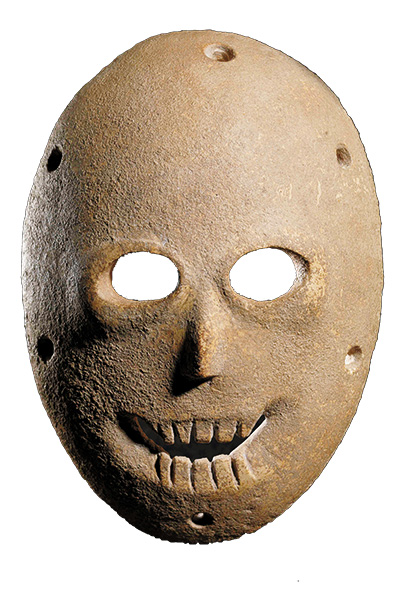Strata: Exhibit Watch: World’s Oldest Masks

Stone masks with vacant eyes and jagged teeth greet visitors at the Israel Museum. No, they are not Halloween decorations but the focal point of a new exhibit of the world’s oldest masks, some of which are being displayed to the public for the first time. Realistic in their simplicity, these ancient faces seem to stare back at us through time itself.
Face to Face: The Oldest Masks in the World features a dozen masks that date to the Pre-Pottery Neolithic B period (8300–5500 B.C.E.) and come from the Judean Hills and Wilderness. The stone masks are fashioned to look like human faces with short noses and holes for eyes and a mouth, many boasting articulated teeth.
The masks in the exhibit are made of chalk and limestone, materials readily available in Judah. Traces of paint have been found on two specimens, indicating that at least a couple of the masks were decorated.
Curiously, some of the masks in the collection, such as the mask from Horvat Duma (above), feature small perforations along their edges. Dr. Debby Hershman, Ilse Katz Leibholz Curator of Prehistoric Cultures at the Israel Museum, suggests that the masks may have been worn or attached to pillars or other structures by these perforations—or that hair was attached to the masks to make them appear more lifelike.
What was the purpose of these 9,000-year-old masks?
Many theories exist, but since these items are prehistoric, we’ll never know for sure. Nevertheless, Hershman demonstrates that even without a written record, a lot of information can be gleaned from the objects, allowing us to make a good guess.
Already a library member? Log in here.
Institution user? Log in with your IP address.

